Abstract
STUDY OBJECTIVE--To investigate the numbers and characteristics of patients with ophthalmological accidents and emergencies presenting to hospitals. DESIGN--Prospective survey over eight weeks. SETTING--Two general and one ophthalmic accident and emergency departments, two general outpatient departments, and an eye hospital ward consulting room (all in two teaching hospitals) in Newcastle upon Tyne. MEASUREMENTS AND MAIN RESULTS--Consultation numbers by age, sex, health district of residence, source of referral, diagnosis, and disposal were determined. An average of 37 ophthalmological emergency patients were seen daily. The all cause consultation rate per 1000 population for Newcastle residents was 2.64 (17.2 per year); for injuries it was 1.10 (7.2 per year) and for inflammations the rate was 0.91 (5.9 per year). Consultation rates per 1000 were 3.5 for males and 1.8 for females, the excess being explained by the higher risk of injury to men. Most patients were self-referred (58%), consulted during office hours (79.6%), were attended by senior house officers working alone (83.9%), and were asked to return for follow up (66.1%). Patients in an accident and emergency department seldom saw a consultant in their initial management. The diagnoses of patients from outside Newcastle were little different from those who lived within the city. The 10 commonest problems accounted for 68% of all cases. Injuries were the commonest problem (40.9% of all diagnoses). CONCLUSION--Ophthalmological accident and emergencies are an important component of an accident and emergency department workload. These patients are usually seen by junior doctors, some untrained in ophthalmology. The wide range of presenting problems poses a challenge for training and the organisation of effective referral chains, while the gender difference in injury rates points to the potential for prevention.
Full text
PDF
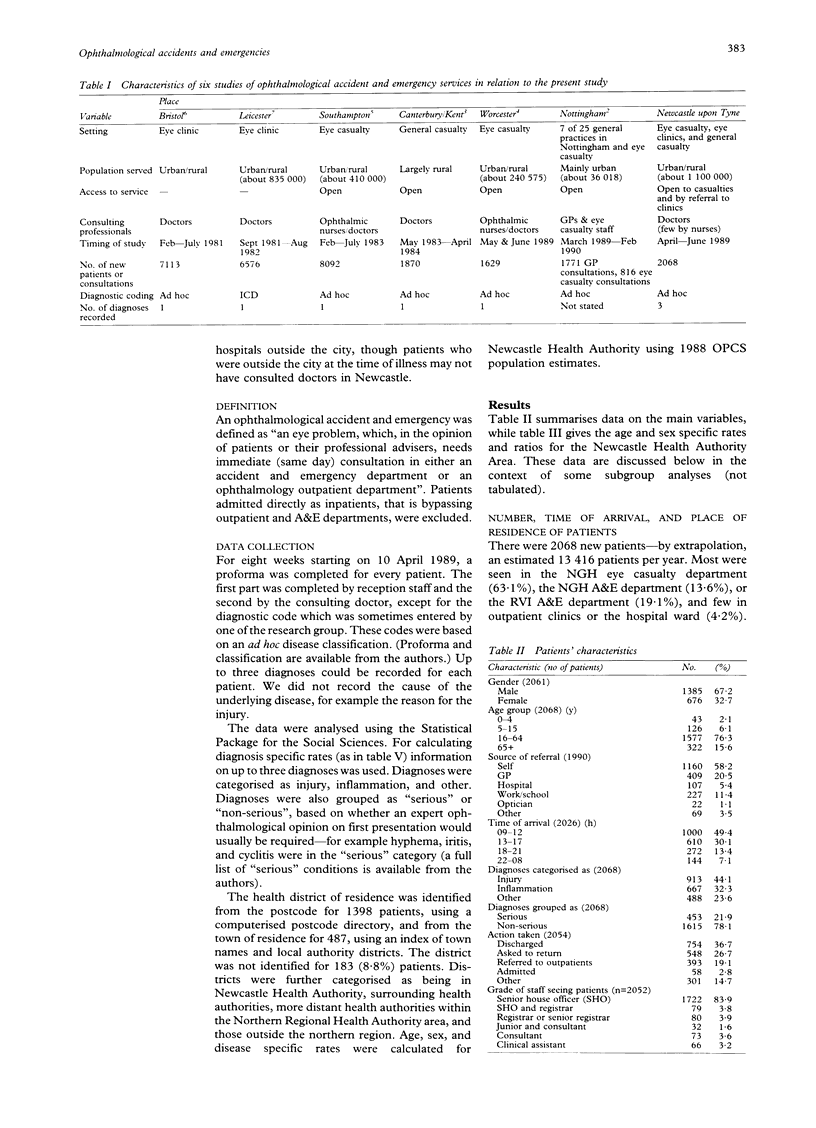
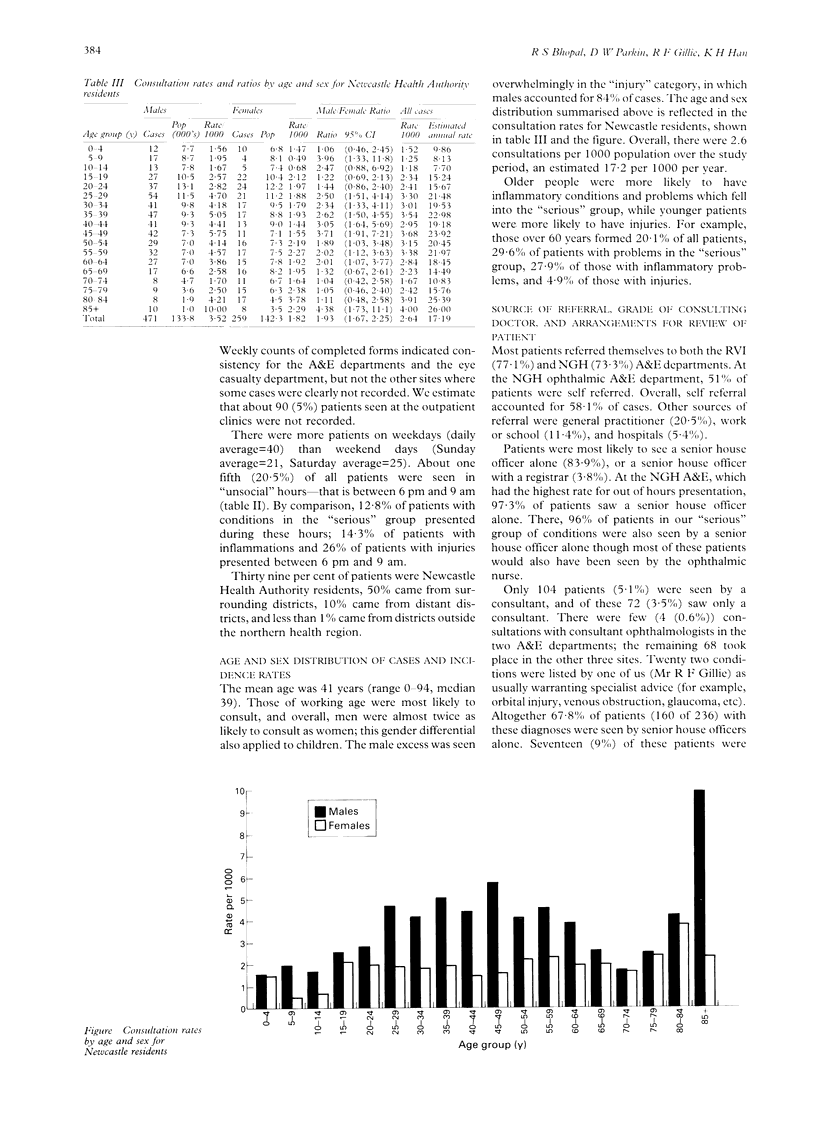
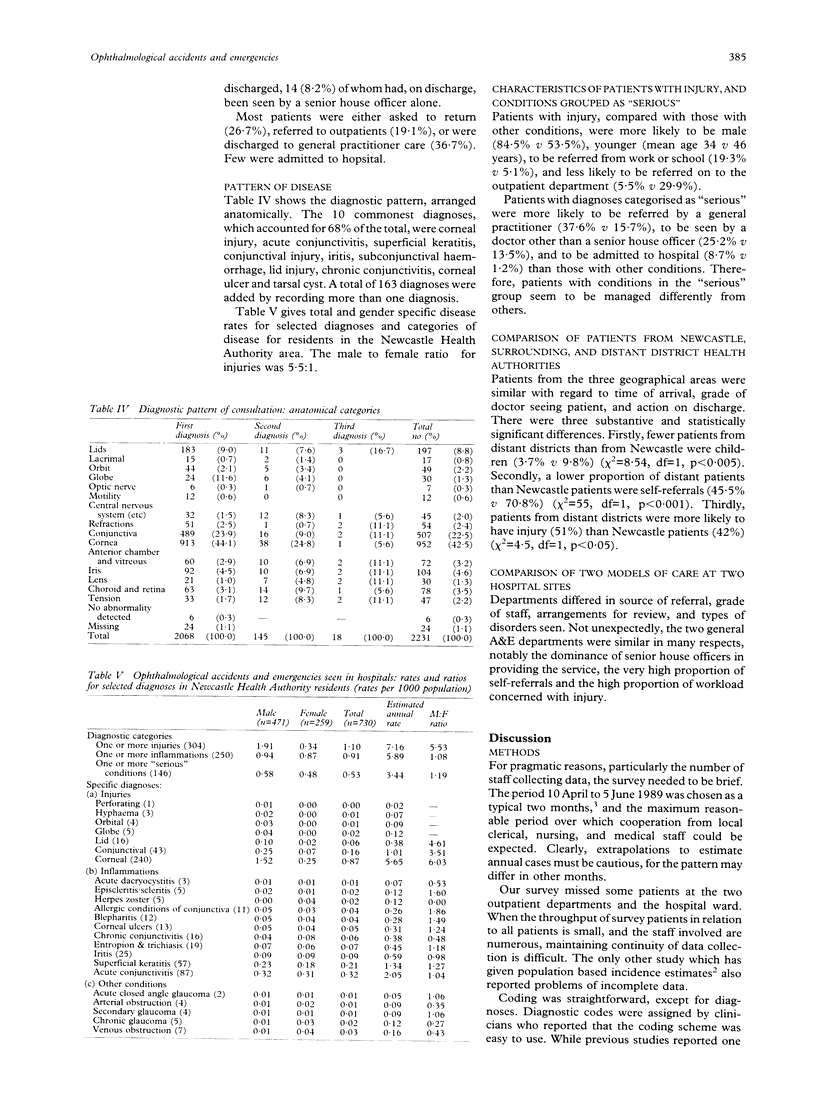
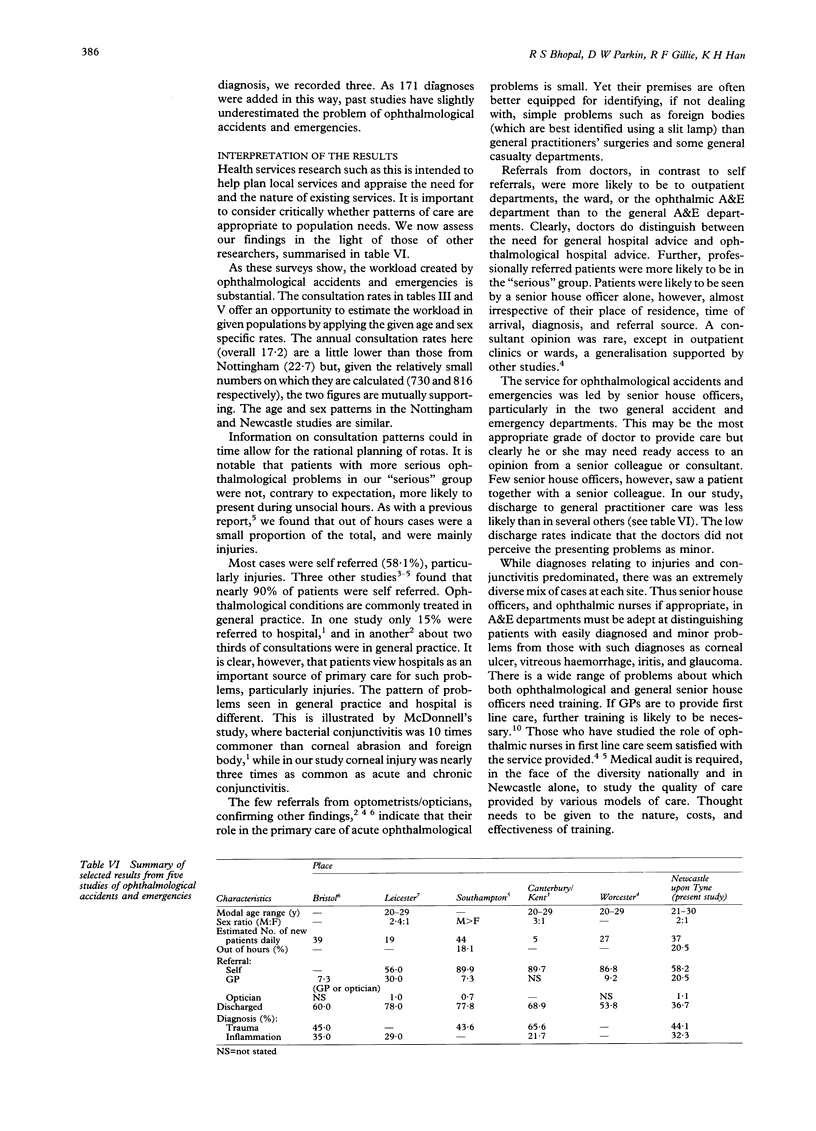
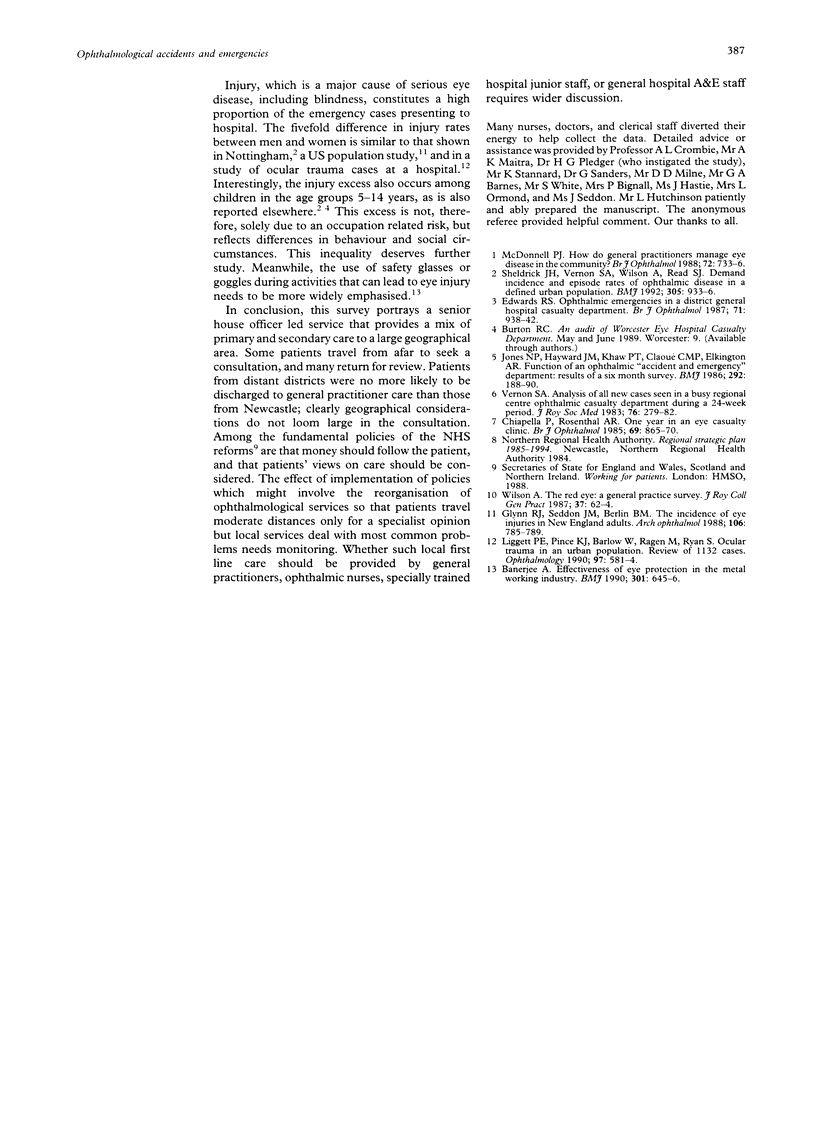
Selected References
These references are in PubMed. This may not be the complete list of references from this article.
- Banerjee A. Effectiveness of eye protection in the metal working industry. BMJ. 1990 Sep 29;301(6753):645–646. doi: 10.1136/bmj.301.6753.645. [DOI] [PMC free article] [PubMed] [Google Scholar]
- Chiapella A. P., Rosenthal A. R. One year in an eye casualty clinic. Br J Ophthalmol. 1985 Nov;69(11):865–870. doi: 10.1136/bjo.69.11.865. [DOI] [PMC free article] [PubMed] [Google Scholar]
- Edwards R. S. Ophthalmic emergencies in a district general hospital casualty department. Br J Ophthalmol. 1987 Dec;71(12):938–942. doi: 10.1136/bjo.71.12.938. [DOI] [PMC free article] [PubMed] [Google Scholar]
- Glynn R. J., Seddon J. M., Berlin B. M. The incidence of eye injuries in New England adults. Arch Ophthalmol. 1988 Jun;106(6):785–789. doi: 10.1001/archopht.1988.01060130855039. [DOI] [PubMed] [Google Scholar]
- Jones N. P., Hayward J. M., Khaw P. T., Claoué C. M., Elkington A. R. Function of an ophthalmic "accident and emergency" department: results of a six month survey. Br Med J (Clin Res Ed) 1986 Jan 18;292(6514):188–190. doi: 10.1136/bmj.292.6514.188. [DOI] [PMC free article] [PubMed] [Google Scholar]
- Liggett P. E., Pince K. J., Barlow W., Ragen M., Ryan S. J. Ocular trauma in an urban population. Review of 1132 cases. Ophthalmology. 1990 May;97(5):581–584. doi: 10.1016/s0161-6420(90)32539-3. [DOI] [PubMed] [Google Scholar]
- McDonnell P. J. How do general practitioners manage eye disease in the community? Br J Ophthalmol. 1988 Oct;72(10):733–736. doi: 10.1136/bjo.72.10.733. [DOI] [PMC free article] [PubMed] [Google Scholar]
- Sheldrick J. H., Vernon S. A., Wilson A., Read S. J. Demand incidence and episode rates of ophthalmic disease in a defined urban population. BMJ. 1992 Oct 17;305(6859):933–936. doi: 10.1136/bmj.305.6859.933. [DOI] [PMC free article] [PubMed] [Google Scholar]
- Vernon S. A. Analysis of all new cases seen in a busy regional centre ophthalmic casualty department during 24-week period. J R Soc Med. 1983 Apr;76(4):279–282. doi: 10.1177/014107688307600408. [DOI] [PMC free article] [PubMed] [Google Scholar]


